
How To Boost THC With UV Light
Growing cannabis can be good fun, and growers are always looking for that next thing to push their weed to the next level. Well, UV-B light might just be it. Used correctly, you can make your weed up to a quarter stronger!
Most growers want to maximise the strength of their harvest. After all, that’s why we do it—to enjoy the effects of the final product. Luckily, understanding the roles that different parts of the light spectrum play can help you improve the THC content of your bud by an incredible 28%! Read on to see how introducing a bit of UV-B into your grow can massively improve potency.
How UV Light Affects Cannabis Plants
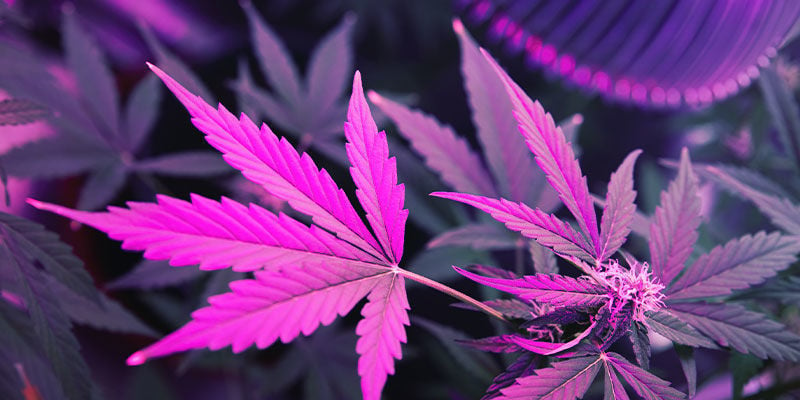
Ultraviolet light (UV light) is a frequency of light wave that is higher up on the spectrum than that which is visible. Most life forms on Earth rely in some way on UV, mostly for the production of vitamin D. Plants, as you probably know, photosynthesise in order to produce energy and carry out their bodily functions.
There are three distinct types of ultraviolet light: UV-A, UV-B, and UV-C. Each has slightly different effects, and it’s important to know which type you are using, and which type your plants need. Use the wrong type, and you could do more harm than good.
UV-A
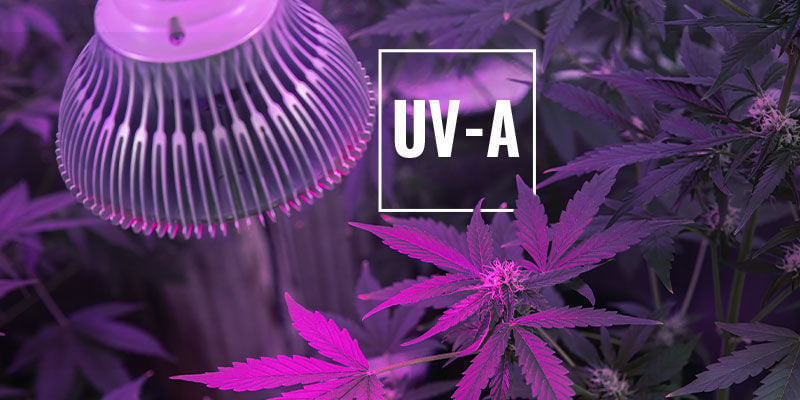
This is also known as long wave light, black light, or soft UV. When emitted by the sun, it is not absorbed by the Earth’s atmosphere. It has the longest wavelength of the 3 types of UV, and as such is the least ionising—i.e. the least damaging.
This is the sort of UV light that casts a ghostly purple light and makes normally invisible things glow strangely. And it is an essential part of life on Earth—not least of all in the production of THC in cannabis.
UV-B
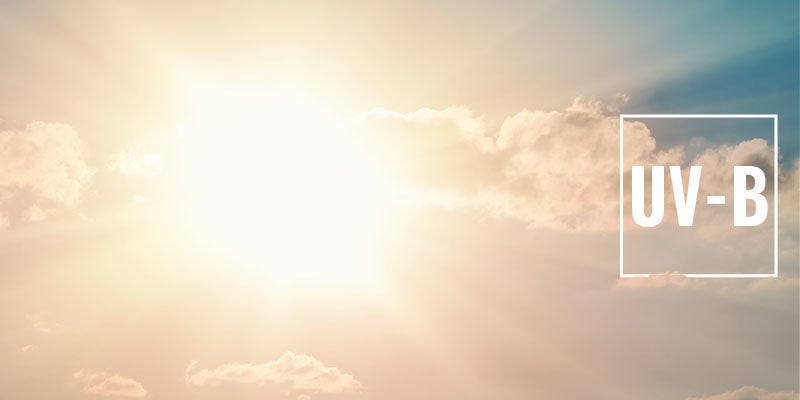
This type of UV has the second shortest (or longest) wavelength of all the UV types, and as such is ionising—capable of causing damage. It is this light that causes the body to produce vitamin D, melanin to darken the skin (for protective purposes), and that can damage cells, causing skin cancer. It is also called intermediate UV and Dorno radiation.
Thankfully, the Earth’s atmosphere has our back. While some UV-B does penetrate the Earth’s atmosphere, giving us a much-needed ingredient for life, the vast majority of it is absorbed by the ozone layer, keeping us safe.
UV-C
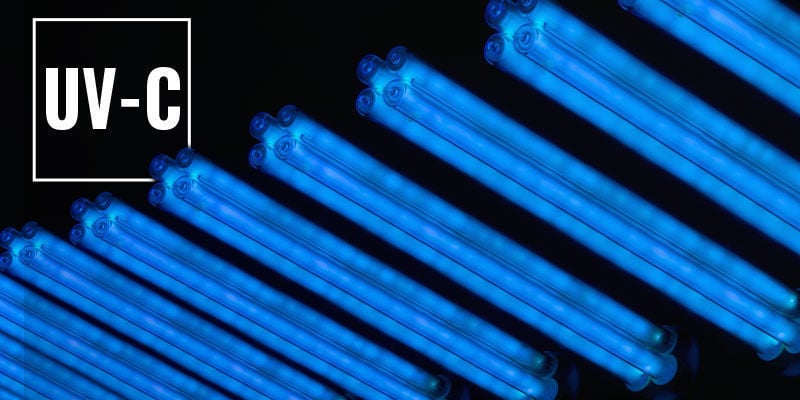
UV-C is the type of ultraviolet radiation with shortest wavelength, and thus is the most ionising. Thankfully, as the wavelengths of radiation shorten and become more dangerous, they also become less penetrative. Indeed, many of the most dangerous types of radiation on Earth cannot even penetrate the skin. UV-C does not penetrate the Earth’s atmosphere, and plays no natural role in life’s processes.
It is also called short wave UV, hard UV, and germicidal UV. Indeed, there are some systems that use UV-C to purify water.
Is UV Light Good for Cannabis Plants?
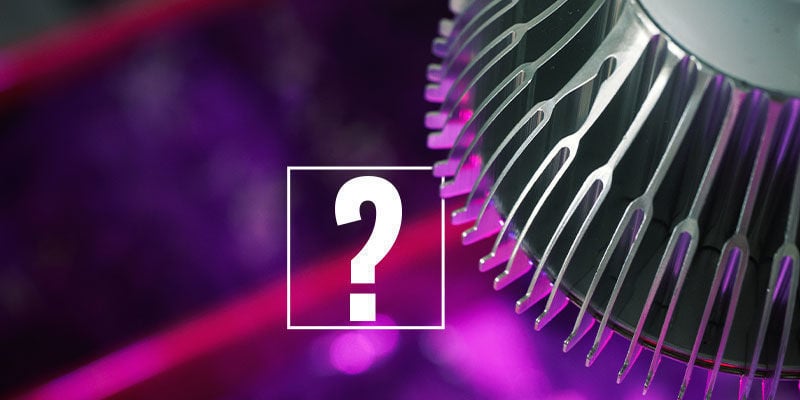
If you want to increase THC production, then yes. Specifically, increased levels of UV-B light, used correctly, will increase the THC content of your cannabis plants—some claim by as much as 28%!
Levels of other cannabinoids, such as CBD, are not affected by increased levels of UV-B, nor are the plant's physiological and morphological structure. Interestingly, research suggests that the increase of THC that occurs in the plant may be similar to an increase in melanin (the hormone that causes skin to darken) in humans. It has been found that plants with a higher THC content have a greater resistance to the harmful effects of UV-B radiation. This implies that when cannabis plants increase THC content, they are essentially getting a tan!
Pros of UV Light for Cannabis Plants
As stated, using UV-B light can enhance the (THC-related) strength of your cannabis plant by up to 28%—although perhaps aim for a slightly more moderate enhancement if growing at home.
Cons of UV Light for Cannabis Plants
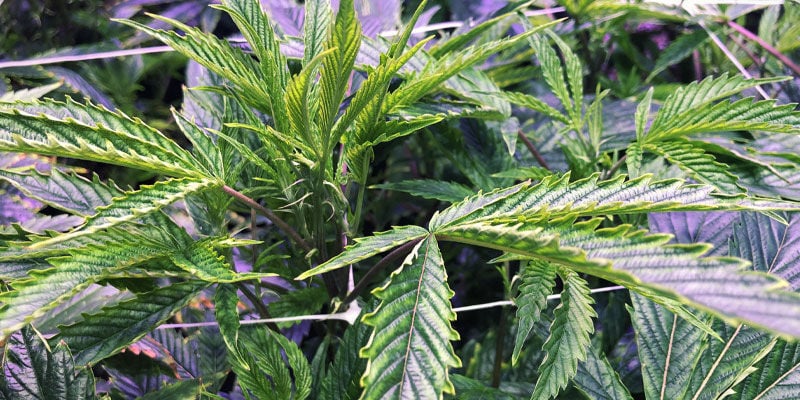
There are a couple of downsides to using strong UV lights in a cannabis grow.
The first is that it is very easy to slip over into an excess of UV light, either due to too much power or lights being too close to the plants. If this happens, you can easily damage or kill your plants, making it more trouble than it is perhaps worth.
Likewise, UV-B lights can be expensive, as it is advised to buy them from a specialist. Because the frequency and strength of the light need to be tailored to the specific needs of weed plants, any old UV-B bulb may not cut it. It’s one of those additions that if you’re going to implement, you’re going to have to do so properly.
Finally, UV-B light can not only damage your plants, but you and your equipment. You will find that things placed beneath it will bleach and degrade over time, meaning you will need to replace them more often. Also, it is advised to wear sun goggles specifically designed for working in grow rooms, as sunglasses may not be strong enough for the intensity of the light. If you have a big grow room, it is also advised to cover your skin to protect it from prolonged exposure to harmful ultraviolet light.
Those things being said, if you’re serious about growing and want to make your cannabis as potent as possible, these steps may seem well worth it to achieve super-strong weed!
Do You Need Dedicated UV Lights for Cannabis?
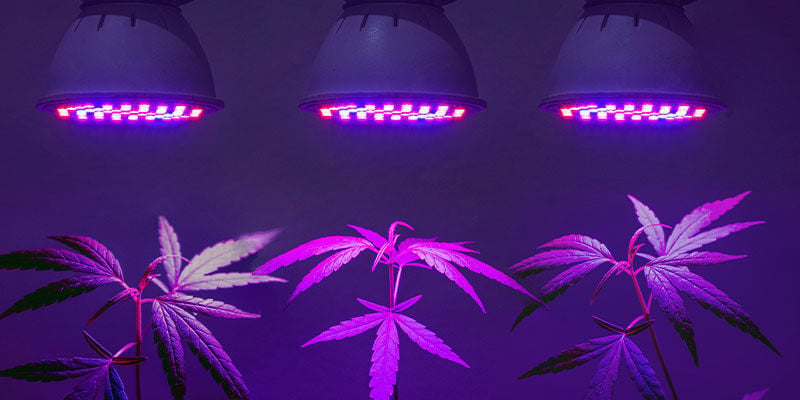
It depends. There are companies that claim to make full-spectrum LED grow lights specifically engineered with the needs of the cannabis plant in mind. The accuracy of this is unclear.
What we do know, though, is that many lights that claim to be “full-spectrum” actually just emit the full spectrum of visible light. While it may look magnificently bright, it has no extra benefit to your plants. They don’t need bright light; they need strong light. For humans, we perceive lumens—the brightness of light. Plants, on the other hand, perceive PAR, which is the strength of light. Many full-spectrum lights are designed with brightness in mind, as opposed to PAR.
Also, it can be useful to keep your lights separate, as when your plants are nearing maturity, you’ll want to switch to a longer-wavelength red-light setup. This imitates the lowering of the sun and the transition from summer to autumn. It is this change that tells your plants to start flowering. This transition is easier to manage if you have different lights.
One final benefit of having a separate UV-B light is that you can adjust the distance separately from the rest of your lights, allowing you fine-tuned control over your plants’ exposure to light. As introducing a UV-specific lighting setup is all about optimisation, you may as well go all the way.
All that being said, if you can get your hands on an all-in-one LED grow light that does the job, it will make your life a lot easier, and use a lot less power.
Can You Grow Cannabis Using a Black Light?
No. It is neither strong enough nor does it have the correct wavelength. It is possible that if it was extremely powerful it would have some effect, but this would likely be minimal.
How To Give Cannabis Plants UV Light
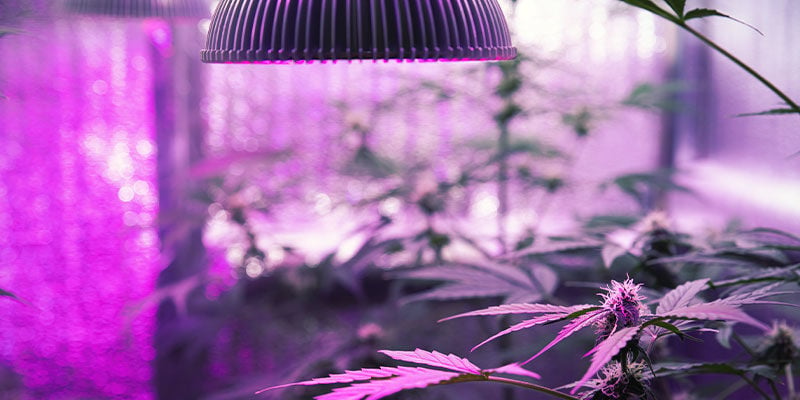
You’ll want to adjust the concentration of UV light you're subjecting your plants to depending on which phase they’re in. Essentially, with artificial lighting you’re trying to mirror the sun at different points throughout the year. And UV light levels change depending on the height of the sun. Below, we’ll explain how much your plants need at each stage.
Seedling
This is the toughest to say. But if in doubt, switch it off entirely for your seedlings. Though light levels may be bright when seedlings emerge in nature, indoor lights can be very intense, and your seedlings will be fragile. At this stage of growth, it’s more important to make sure they get a good, healthy start, rather than obsessing over maximum yield. You can supercharge it during the vegetative stage—for now, just treat them gently.
Vegetative Stage
This is when you can blast it (within reason). In nature, plants will be in the vegetative stage throughout the height of summer, when the sun is at its strongest. By giving them a good dose of UV light, you’re letting them know that they don't need to stretch up in order to compete, and that they can expend their energy growing bushy and dense. In doing so, they will develop more leaves, which will allow them to photosynthesise more, thus giving them more energy. You don't want to burn them, but this is when you want the fullest, strongest spectrum of light.
Flowering Stage
This is autumn, and the sun is waning in the sky. As it gets lower, more of its rays are absorbed by the Earth’s atmosphere—especially UV-B. So decrease or switch off the UV-B for this stage. Plants will have completed most of their growing and will now just be focused on creating bud.
That being said, if you’re able to fine-tune it to optimal levels, you’ll get the very best results.
Are UV Light Bulbs for Cannabis Safe?
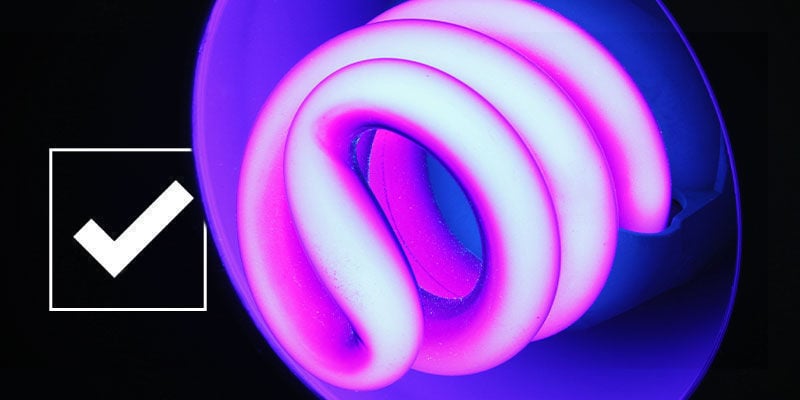
Yes. Provided you buy well-made bulbs from a reputable seller, you should have no problems you wouldn’t encounter with other lights. The greatest risk is damage to your eyes and skin, so take the necessary precautions. Though it may not seem painful, repeated, prolonged exposure to these lights can damage your eyes in the long run. Not worth the risk!
Other than that, the only other danger is that you get over-excited with them and torch your plants. Just keep an eye on the leaves and make sure they don’t look burnt.
- (n.d.). Uv-b radiation effects on photosynthesis, growth and cannabinoid production of two cannabis sativa chemotypes - https://onlinelibrary.wiley.com
-
 6 min
25 February 2025
Top 10 strongest and most potent cannabis strains
Here we bring you the strongest, most potent cannabis strains you can get your hands on in today's market. Are you ready for this list of fire genetics? Let's find out!
6 min
25 February 2025
Top 10 strongest and most potent cannabis strains
Here we bring you the strongest, most potent cannabis strains you can get your hands on in today's market. Are you ready for this list of fire genetics? Let's find out!
-
 5 min
13 January 2022
What Are The Side Effects Of THC?
THC-rich cannabis is one of the most popular recreational drugs in the world, as well as one of the most sought-after holistic herbs. And while cannabis is often praised for being natural and...
5 min
13 January 2022
What Are The Side Effects Of THC?
THC-rich cannabis is one of the most popular recreational drugs in the world, as well as one of the most sought-after holistic herbs. And while cannabis is often praised for being natural and...
-
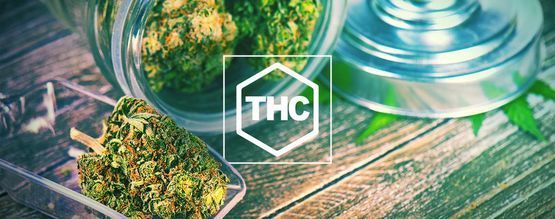 4 min
13 June 2019
Everything You Need To Know About THC
THC—this simple molecule inspires millions of people to grow cannabis every year. But what exactly is THC? And why do people love it so much?
4 min
13 June 2019
Everything You Need To Know About THC
THC—this simple molecule inspires millions of people to grow cannabis every year. But what exactly is THC? And why do people love it so much?
-
 5 min
1 July 2018
Top 7 Cannabis Strains With A Unique THC:CBD Ratio
We give you a run-down on several strains and their unique THC:CBD ratios. Find out which strain may work best for your individual needs and preferences as a medical and/or recreational user.
5 min
1 July 2018
Top 7 Cannabis Strains With A Unique THC:CBD Ratio
We give you a run-down on several strains and their unique THC:CBD ratios. Find out which strain may work best for your individual needs and preferences as a medical and/or recreational user.













 United States
United States










